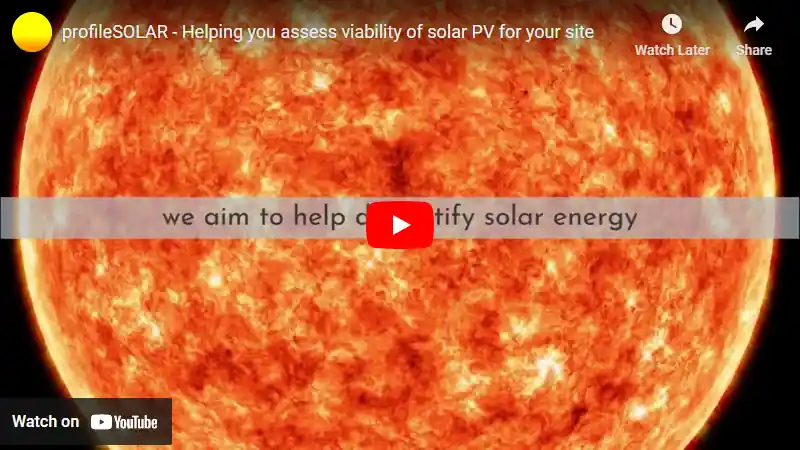

Solar Potential in Cajicá, Cundinamarca, Colombia
Cajicá, Cundinamarca, Colombia, situated at coordinates 4.9171, -74.0255, demonstrates excellent year-round solar energy generation potential. This tropical location benefits from consistent sunlight throughout most of the year, with seasonal variations primarily defined by wet and dry periods rather than significant temperature fluctuations. The solar electricity output remains remarkably stable across all meteorological seasons. Autumn shows the highest productivity with 5.43 kWh per day for each kilowatt of installed capacity. Winter follows closely with 5.25 kWh/day, while summer produces 5.11 kWh/day. Spring has the lowest output but still delivers a respectable 4.96 kWh/day per installed kilowatt.Optimal Panel Installation
For fixed solar panel installations in Cajicá, Cundinamarca, the ideal tilt angle is 5 degrees South. This specific angle maximizes total year-round energy production by optimally capturing the sun's rays as they change position throughout the year. This slight tilt is notably different from installations in locations farther from the equator, which typically require steeper angles.Environmental Considerations
Several environmental factors could potentially affect solar production in Cajicá:- Rainfall patterns: The region experiences distinct wet seasons, particularly April-May and October-November, when cloud cover can temporarily reduce solar efficiency.
- Dust and pollen: Agricultural activities in the Sabana de Bogotá region can generate airborne particles that accumulate on panels.
- Morning fog: Being part of the Bogotá savanna, Cajicá occasionally experiences morning fog that can delay peak production until mid-morning.
Preventative Measures
To maximize solar energy production in Cajicá, Cundinamarca, several practical steps can be implemented:- Regular cleaning schedule: Establish quarterly panel cleaning during dry seasons and more frequent cleaning during agricultural activity periods.
- Self-cleaning panel options: Consider panels with hydrophobic coatings that help shed water and minimize dust accumulation.
- Slight over-dimensioning: Install slightly more capacity than strictly necessary to compensate for reduced output during the wettest months.
- Microinverter technology: Using microinverters rather than string inverters can help minimize production losses when some panels are temporarily shaded.
Note: The Tropics are located between 23.5° North and -23.5° South of the equator.
So far, we have conducted calculations to evaluate the solar photovoltaic (PV) potential in 65 locations across Colombia. This analysis provides insights into each city/location's potential for harnessing solar energy through PV installations.
Link: Solar PV potential in Colombia by location
Solar output per kW of installed solar PV by season in Cajicá
Seasonal solar PV output for Latitude: 4.9171, Longitude: -74.0255 (Cajicá, Colombia), based on our analysis of 8760 hourly intervals of solar and meteorological data (one whole year) retrieved for that set of coordinates/location from NASA POWER (The Prediction of Worldwide Energy Resources) API:




Ideally tilt fixed solar panels 5° South in Cajicá, Colombia
To maximize your solar PV system's energy output in Cajicá, Colombia (Lat/Long 4.9171, -74.0255) throughout the year, you should tilt your panels at an angle of 5° South for fixed panel installations.
As the Earth revolves around the Sun each year, the maximum angle of elevation of the Sun varies by +/- 23.45 degrees from its equinox elevation angle for a particular latitude. Finding the exact optimal angle to maximise solar PV production throughout the year can be challenging, but with careful consideration of historical solar energy and meteorological data for a certain location, it can be done precisely.
We use our own calculation, which incorporates NASA solar and meteorological data for the exact Lat/Long coordinates, to determine the ideal tilt angle of a solar panel that will yield maximum annual solar output. We calculate the optimal angle for each day of the year, taking into account its contribution to the yearly total PV potential at that specific location.

Seasonally adjusted solar panel tilt angles for Cajicá, Colombia
If you can adjust the tilt angle of your solar PV panels, please refer to the seasonal tilt angles below for optimal solar energy production in Cajicá, Colombia. As mentioned earlier, for fixed-panel solar PV installations, it is optimal to maintain a 5° South tilt angle throughout the year.
| Overall Best Summer Angle | Overall Best Autumn Angle | Overall Best Winter Angle | Overall Best Spring Angle |
|---|---|---|---|
| 11° North in Summer | 11° South in Autumn | 21° South in Winter | 2° North in Spring |
Our recommendations take into account more than just latitude and Earth's position in its elliptical orbit around the Sun. We also incorporate historical solar and meteorological data from NASA's Prediction of Worldwide Energy Resources (POWER) API to assign a weight to each ideal angle for each day based on its historical contribution to overall solar PV potential during a specific season.
This approach allows us to provide much more accurate recommendations than relying solely on latitude, as it considers unique weather conditions in different locations sharing the same latitude worldwide.
Calculate solar panel row spacing in Cajicá, Colombia
We've added a feature to calculate minimum solar panel row spacing by location. Enter your panel size and orientation below to get the minimum spacing in Cajicá, Colombia.
Our calculation method
- Solar Position:
We determine the Sun's position on the Winter solstice using the location's latitude and solar declination. - Shadow Projection:
We calculate the shadow length cast by panels using trigonometry, considering panel tilt and the Sun's elevation angle. - Minimum Spacing:
We add the shadow length to the horizontal space occupied by tilted panels.
This approach ensures maximum space efficiency while avoiding shading during critical times, as the Winter solstice represents the worst-case scenario for shadow length.
Topography for solar PV around Cajicá, Colombia
The region surrounding Cajicá, Colombia features varied topography typical of the Eastern Andes mountain range. Positioned in the Bogotá Savanna (Sabana de Bogotá), Cajicá sits at an elevation of approximately 2,558 meters (8,392 feet) above sea level. This high-altitude plateau creates a relatively flat central area surrounded by rolling hills and more pronounced elevations. The landscape around Cajicá is characterized by a mix of gentle undulations and more dramatic terrain changes as one moves away from the central savanna. To the east, the terrain gradually rises toward the Eastern Cordillera mountains, creating slopes of varying steepness. The western portions maintain a more consistent plateau-like character before eventually rising toward the hills that separate the Bogotá Savanna from neighboring valleys.
Notable Topographical Features
The Bogotá River flows near Cajicá, influencing the local topography by creating shallow valleys and floodplains. This river system has historically shaped the landscape through erosion and sediment deposition. Small tributary streams create additional contours across the otherwise relatively flat savanna. The soils in this region are generally fertile, resulting from ancient lacustrine deposits when the entire savanna was a large lake. This geological history explains the predominantly flat character of the central areas around Cajicá.Potential Areas for Solar PV Development
For large-scale solar photovoltaic (PV) installations, the flatter portions of the Bogotá Savanna surrounding Cajicá offer the most suitable terrain. These areas provide several advantages for solar development: The relatively level terrain west and southwest of Cajicá presents minimal need for extensive land preparation, reducing construction costs for large solar arrays. These flat expanses allow for efficient panel arrangement and simplified infrastructure development. Areas with slight southern-facing slopes (northern hemisphere) could potentially increase solar panel efficiency by providing a natural tilt toward the sun's path. Some gentle slopes east of Cajicá might offer this advantage while still being stable enough for large installations. The elevated nature of the entire Bogotá Savanna region means less atmospheric interference compared to lower elevations, potentially enhancing solar radiation reception. The plateau's elevation places it above some weather patterns that might otherwise reduce solar exposure.Topographical Challenges
Despite these advantages, certain topographical challenges exist. The more pronounced hills surrounding the savanna would require significant grading and present drainage concerns during the region's rainy seasons. Additionally, some low-lying areas near the Bogotá River and its tributaries experience periodic flooding, making them unsuitable for electrical infrastructure. Areas with northern-facing slopes (away from the equator) would receive less direct sunlight throughout the year, reducing their suitability for solar development despite possibly having other favorable characteristics. The region experiences regular precipitation due to its high-altitude tropical location, necessitating proper drainage solutions for any large-scale solar development. While the overall climate supports solar energy, site selection must account for localized topographical features that might affect water runoff. In conclusion, the most promising areas for large-scale solar PV development near Cajicá would be the flat to gently sloping southern-facing terrain that characterizes much of the western and southwestern portions of the surrounding savanna, provided they are sufficiently elevated above flood-prone zones.Colombia solar PV Stats as a country
Colombia ranks 74th in the world for cumulative solar PV capacity, with 184 total MW's of solar PV installed. Each year Colombia is generating 4 Watts from solar PV per capita (Colombia ranks 81st in the world for solar PV Watts generated per capita). [source]
Are there incentives for businesses to install solar in Colombia?
Yes, there are several incentives for businesses wanting to install solar energy in Colombia. The Colombian government offers a range of financial incentives and tax breaks for businesses that invest in renewable energy projects. These include grants, loans, and subsidies for the purchase of equipment and installation costs. Additionally, businesses can benefit from net metering policies which allow them to sell excess electricity generated by their solar systems back to the grid at a premium rate. Finally, businesses may also be eligible for additional benefits such as reduced import duties on solar equipment or accelerated depreciation allowances on investments in renewable energy projects.
Do you have more up to date information than this on incentives towards solar PV projects in Colombia? Please reach out to us and help us keep this information current. Thanks!
Citation Guide
Article Details for Citation
Author: Aaron Robinson
Publisher: profileSOLAR.com
First Published: Wednesday 21st of May 2025
Last Updated: Saturday 24th of May 2025
Tell Us About Your Work
We love seeing how our research helps others! If you've cited this article in your work, we'd be delighted to hear about it. Drop us a line via our Contact Us page or on X, to share where you've used our information - we may feature a link to your work on our site. This helps create a network of valuable resources for others in the solar energy community and helps us understand how our research is contributing to the field. Plus, we occasionally highlight exceptional works that reference our research on our social media channels.
Feeling generous?

Share this with your friends!


Compare this location to others worldwide for solar PV potential
The solar PV analyses available on our website, including this one, are offered as a free service to the global community. Our aim is to provide education and aid informed decision-making regarding solar PV installations.
However, please note that these analyses are general guidance and may not meet specific project requirements. For in-depth, tailored forecasts and analysis crucial for feasibility studies or when pursuing maximum ROI from your solar projects, feel free to contact us; we offer comprehensive consulting services expressly for this purpose.
Helping you assess viability of solar PV for your site
Calculate Your Optimal Solar Panel Tilt Angle: A Comprehensive Guide
Enhance your solar panel's performance with our in-depth guide. Determine the best tilt angle using hard data, debunk common misunderstandings, and gain insight into how your specific location affects solar energy production.







